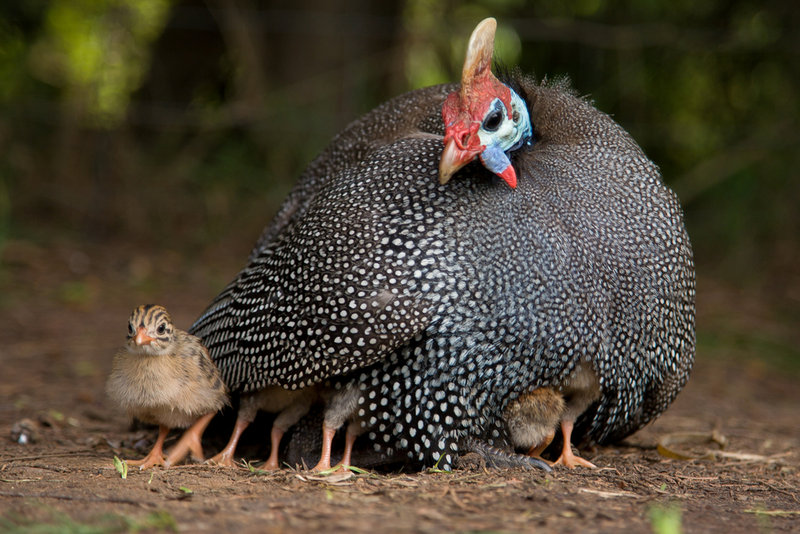It’s time for a little myth-busting.
Now that the wedding season is upon us, one often hears the dire warning that throwing rice on the happy couple poses a risk for birds. Rice supposedly swells with water in the gut of birds, causing the birds to die.
Let’s consider the digestive system of a bird to see how ridiculous this claim is.
The digestive system of birds varies from species to species according to diet, but the basic components of the gut are the same. Food is first taken into the mouth cavity. Since birds have no teeth, the food is not broken into smaller pieces as we do with our teeth.
However, seed-eating birds do have well developed salivary glands that secrete enzymes into the oral cavity. These enzymes begin the breakdown of the hard coat that surrounds seeds.
The food next passes through the esophagus. In some cases, the esophagus has a large sac, the crop, where seeds or other food may be stored before it can be processed in the lower part of the gut. A crop can be advantageous because a bird can take in a large quantity of seeds and then seek shelter, digesting the stored food away from predators.
The esophagus and the crop do not produce enzymes and play no active role in digestion. The esophagus serves as a connector to get food from the oral cavity to the first of two stomachs in a bird.
The first stomach is called the glandular stomach, or proventriculus. This organ is similar in function to our own stomachs. The liquid in the stomach contains concentrated hydrochloric acid as well as proteases, enzymes that break down proteins. The nutritious part of a seed, the endosperm, is rich in proteins.
Next the food passes into the muscular stomach or gizzard. The gizzard is the site of mechanical digestion; it is where a bird chews its food. The inner portion of the gizzard has a thick, hard lining of folds and ridges. The muscles surrounding the lining move the ridges and folds past each other, grinding the food.
Many birds, including seed-eaters, retain grit in the gizzard to help to break the food down into smaller and smaller pieces.
How effective is the gizzard of a seed-eating bird? We know of some experiments with turkeys that showed they are able to pulverize English walnuts, steel needles and surgical lancets in their gizzards! It is ludicrous to imagine that rice kernels would pose any threat to a seed-eating bird.
The scientific name of the bobolink is Dolichonyx oryzivoru; the species name means rice-eater. A common name for these birds in the southern states is rice birds.
So feel free to shower the happy couple with rice as they depart for their honeymoon. By the way, I have heard similar advice about the dangers of feeding bread to birds, which seems even more absurd.
TICKS CONSUMED
In the last column, I wrote about the potential importance of birds in spreading Lyme disease ticks and the Lyme disease bacteria. A paper published in 1992 in the Wilson Bulletin described the use of guineafowl (the helmeted guineafowl is the formal name of these gray and white birds) as a “folk” defense against Lyme disease ticks on Shelter Island, N.Y., as well as Nantucket and Martha’s Vineyard in Massachusetts.
In Africa, helmeted guineafowl eat a variety of arthropods and glean ticks from warthogs. The practice of using guineafowl in Nantucket was impelled by the discovery of three ticks in the gut of a guineafowl.
The authors of this article, David Duffy, Randy Downer (now a neighbor of mine in China) and Christie Brinkley, described experiments done in two towns on Long Island. The study involved setting up wire cages to keep guineafowl out of portions of lawns adjacent to wooded areas.
The authors found more Lyme disease ticks in the cages, showing that guineafowl can reduce the abundance of these ticks.
The guineafowl had significant impacts on other species of arthropods as well.
The results of this study suggest that guineafowl can be part of a management system to reduce the likelihood of Lyme disease, reducing the need for acaricides (tick poisons).
I bring up this interesting study in today’s column because of the claim that ticks can pass through the guts of birds unharmed. Ticks do have a hard exoskeleton, but I can find no scientific data in support of the assertion.
I think a tick would fare no better than a steel needle in passing through a large seed-eater’s gut. So until I see convincing results, color me skeptical on this claim.
Herb Wilson teaches ornithology and other biology courses at Colby College. He welcomes reader comments and questions at:
whwilson@colby.edu.
Send questions/comments to the editors.



Success. Please wait for the page to reload. If the page does not reload within 5 seconds, please refresh the page.
Enter your email and password to access comments.
Hi, to comment on stories you must . This profile is in addition to your subscription and website login.
Already have a commenting profile? .
Invalid username/password.
Please check your email to confirm and complete your registration.
Only subscribers are eligible to post comments. Please subscribe or login first for digital access. Here’s why.
Use the form below to reset your password. When you've submitted your account email, we will send an email with a reset code.